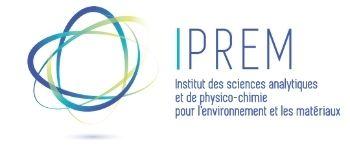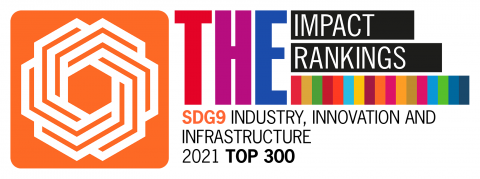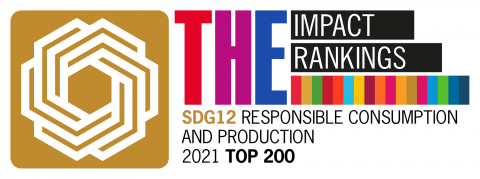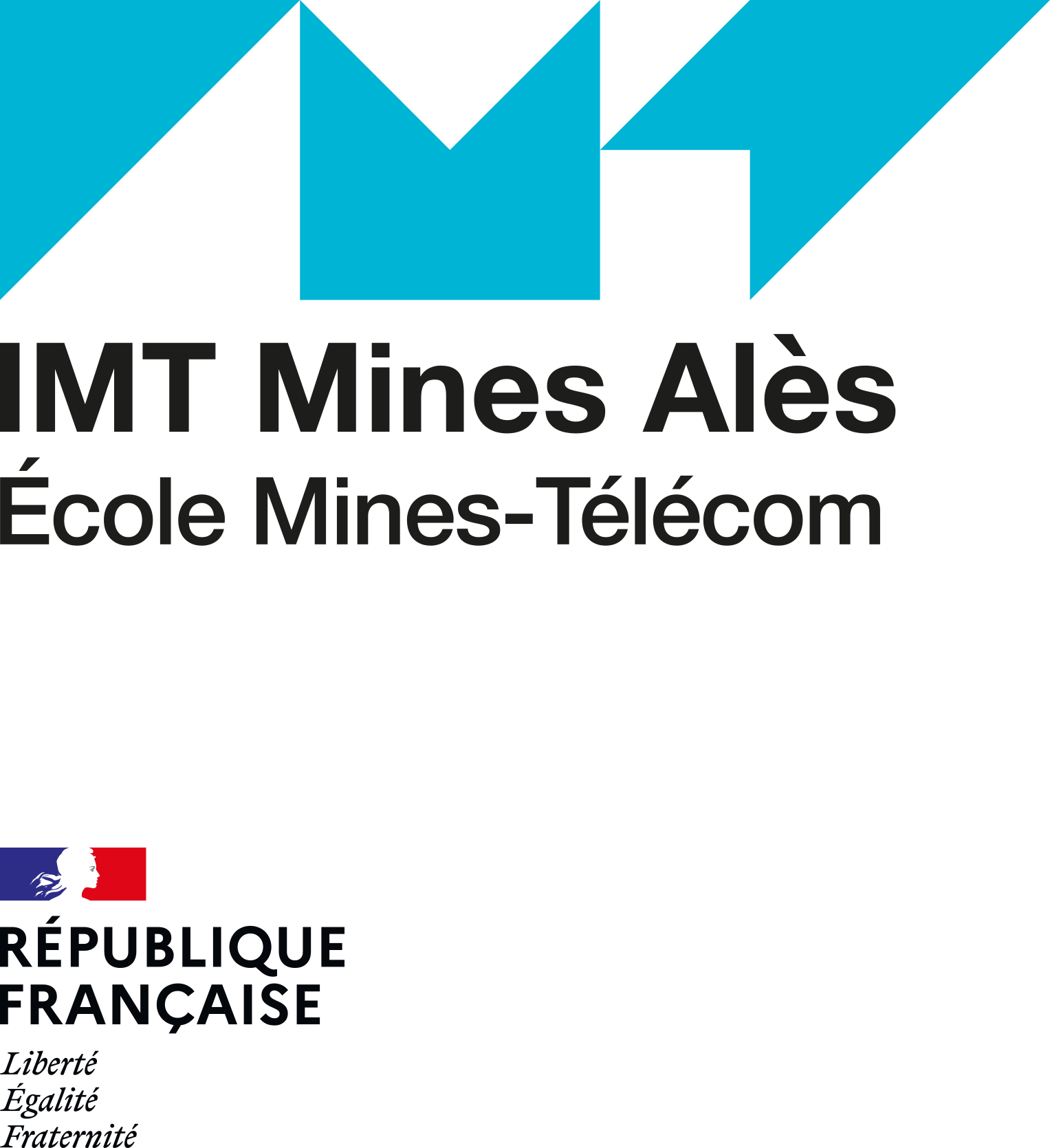The Research team on the Interactions of Materials with their Environment (RIME) is located in Pau. Since January 1, 2020, its staff has joined the Institute of Analytical Sciences and Physical Chemistry for the Environment and Materials - IPREM (UMR 5254 CNRS, University of Pau and the Pays de l'Adour) of which IMT Mines Alès is a partner.

General presentation
The RIME team conducts transversal research at the interface of the fields of materials and the environment, combining skills in analytical chemistry, physical chemistry and physics of materials.

The objective is to evaluate, understand and control the impacts of materials, processes and associated processes (manufacturing, use, aging, recycling, ...) on the environment, health and sensory properties.
Different types of interactions of materials with their environment are studied:
Material/environment interaction at the pollutant scale
During their life cycle (manufacturing, use, aging, recycling), materials are likely to emit potentially toxic pollutants (synthesis residues, additives, degradation by-products). The challenge is to highlight and study the exchange between materials and the environment of the pollutants in order to assess their impact. This implies the development of experimental devices and analytical methodologies adapted to the low concentration levels and specific physico-chemical properties of these compounds. A studied application field, and a priority in terms of public health, is indoor air quality.
Material/environment interaction on a global scale
For new products and innovative materials, it is essential to evaluate the environmental gain and also to identify possible transfers of pollution, either between stages of the life cycle, or between environmental impacts. This is why the team implements Life Cycle Assessment (LCA) methods that allow the evaluation of the impact of a solution, to compare it to another, and this by taking into account the material in its entirety from the extraction of the resources necessary for its production to its end of life.
Material/human interaction
The RIME team is interested in the interaction between materials and humans through the potential health impact of the pollutants they emit, but also through the study of their sensory properties. The objective is to establish a relationship between the physicochemical properties of materials and the perceived properties. The work aims in particular to determine whether measurements of appearance can characterize the state or evolution of a material and contribute to the design of materials with controlled properties (materials with low environmental or health impact, functionalized materials).
Given the transversal nature of these research themes, the applications are multiple and concern the building sector, transportation, agriculture, agri-food, cosmetics or textile industries.
The current work of the RIME team concerns the evaluation of the global environmental impact of materials by Life Cycle Assessment (LCA), the study of the impact of construction, decoration and furnishing materials on indoor air quality, the study of the "cocktail" effect of indoor air pollutants on respiratory health. The work also concerns the biological control of crop pests with the study of the diffusion in the air of pheromones used as an alternative to pesticides.
Staff
BEIGBEDER Joana, Lecturer-researcher, see the CV
BIDORET Jean-Serge, Research technician
DESAUZIERS Valérie, Lecturer-researcher, HDR
GARAY-BOZEC Hélène, Lecturer-researcher,
PLAISANCE Hervé, Lecturer-researcher, HDR
Research topics
To study the interactions of materials with their environment, the team, within the UMR IPREM, develops innovative metrological approaches to study the material/environment exchanges of emerging pollutants, and to characterize the state or evolution of a material.
This axis concerns analytical developments according to two complementary approaches:
- Specific analysis by chromatographic methods of emerging organic micropollutants emitted by materials in the environment (air/water) and at the interface material/environment. We are primarily interested in compounds that are little studied because they are difficult to analyze (polar and/or highly volatile VOCs, Semi-volatile Organic Compounds (SVOCs) such as certain material additives).
The research focuses on the development of innovative active or passive sampling methods based on the extraction and pre-concentration of the pollutants of interest on adsorbents. These solid phases can be modified (impregnation by a specific reagent) according to the desired sampling selectivity or the instability of the compound in the analytical system (thermolability, reactivity,...).
The developed methodologies are also used in comparison and validation of alternative methods.
- Rapid and non-contact characterization: these characterizations can be physical (optical measurements) or chemical (tracer detection or molecular fingerprinting). They are intended to constitute the signature of a material (determination of origin, authentication) or of the impact of a process associated with the material.
The work focuses mainly on the development of an innovative metrology allowing the characterization of emerging pollutants and tracers in the environment (air and water), and the development of a characterization approach by global volatile fingerprint, indicator of a characteristic emission, a process or a metabolism.
The coupling of these methods of physical measurement (optical) or volatile chemical fingerprinting with perception is studied.
The methodologies developed in theme 1 allow to answer the problems of themes 2 and 3.
The research concerns the study of transfers (emission, adsorption/desorption, diffusion) of volatile substances between materials and air, in the continuity of work already carried out.
The developments concern the study of emerging pollutants (semi-volatile organic additives) whose transfer from materials to the air is little studied but is nevertheless determining for the evaluation and the modeling of human exposure. This subject opens perspectives towards the evaluation of the sanitary impact of these pollutants and has led to new academic collaborations (EHESP, University of Paris-Descartes).
The opening of this theme to the transfers of pollutants from materials to water is envisaged.
Thanks to the metrological tools developed in theme 1, it will be possible to characterize a material by an optical measurement or a volatile print to characterize its state, identify it, authenticate it (fight against counterfeiting) or determine its origin (concerns the agro-food sector, for example). It will also be a question of evaluating the impact of processes (synthesis, manufacturing, recycling), processes (ageing) or particular architecture (core@shell, for example) on the material and to contribute to the design of materials with controlled properties (materials with low environmental or sanitary impact, functionalized materials, materials with controlled properties).
In this theme, the work will also concern the sensory properties of materials.
The environmental impacts of a material or product are studied globally according to the Life Cycle Assessment (LCA) method. This standardized method makes it possible to evaluate several environmental impacts throughout the life cycle of the material: from the extraction of raw materials to its end of life (incineration, recycling, etc.), taking into account all the intermediate stages of implementation and transport. The life cycle modeling is carried out with the help of software that allows access to recent databases and to calculate the potential environmental impacts.
Publications
Partnerships
International collaborations are mainly linked to European research projects INTERREG and H2020 in which the team is a partner: University of Zaragoza, University of Westminster, University of Ghent. The team also regularly welcomes students from the University of Lebanon.
Technology transfer and research valorization represent a very significant activity of the team. A majority of the research is the subject of direct contracts with companies with a high proportion of theses in partnership with a company, which represent 60% of the theses defended over the last 5 years. Over this period, these activities have led to 5 patents, licenses and invention declarations, and to a commercialization agreement for a research product.
Main industrial partners: M2i, Nobatek/INEF4, RENAULT, FCBA, CSTB, ARD, CRISTAL UNION, ETHERA, ORRION CHEMICALS.
Valérie Desauziers
Research team leader



